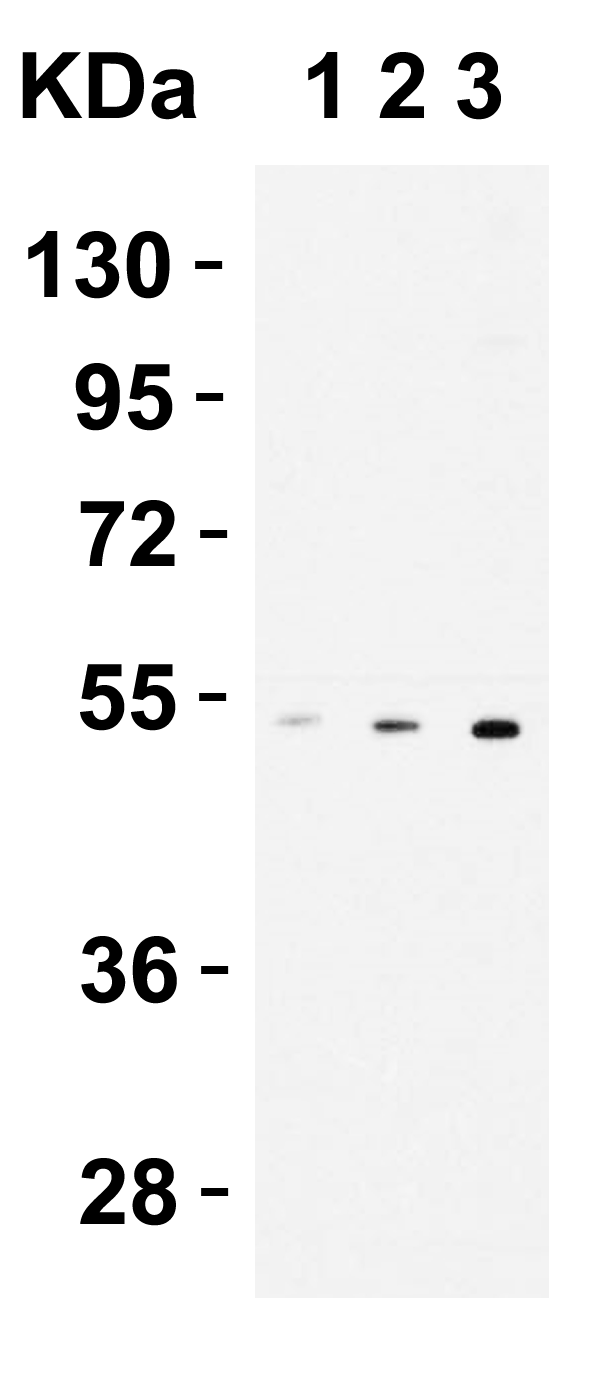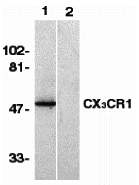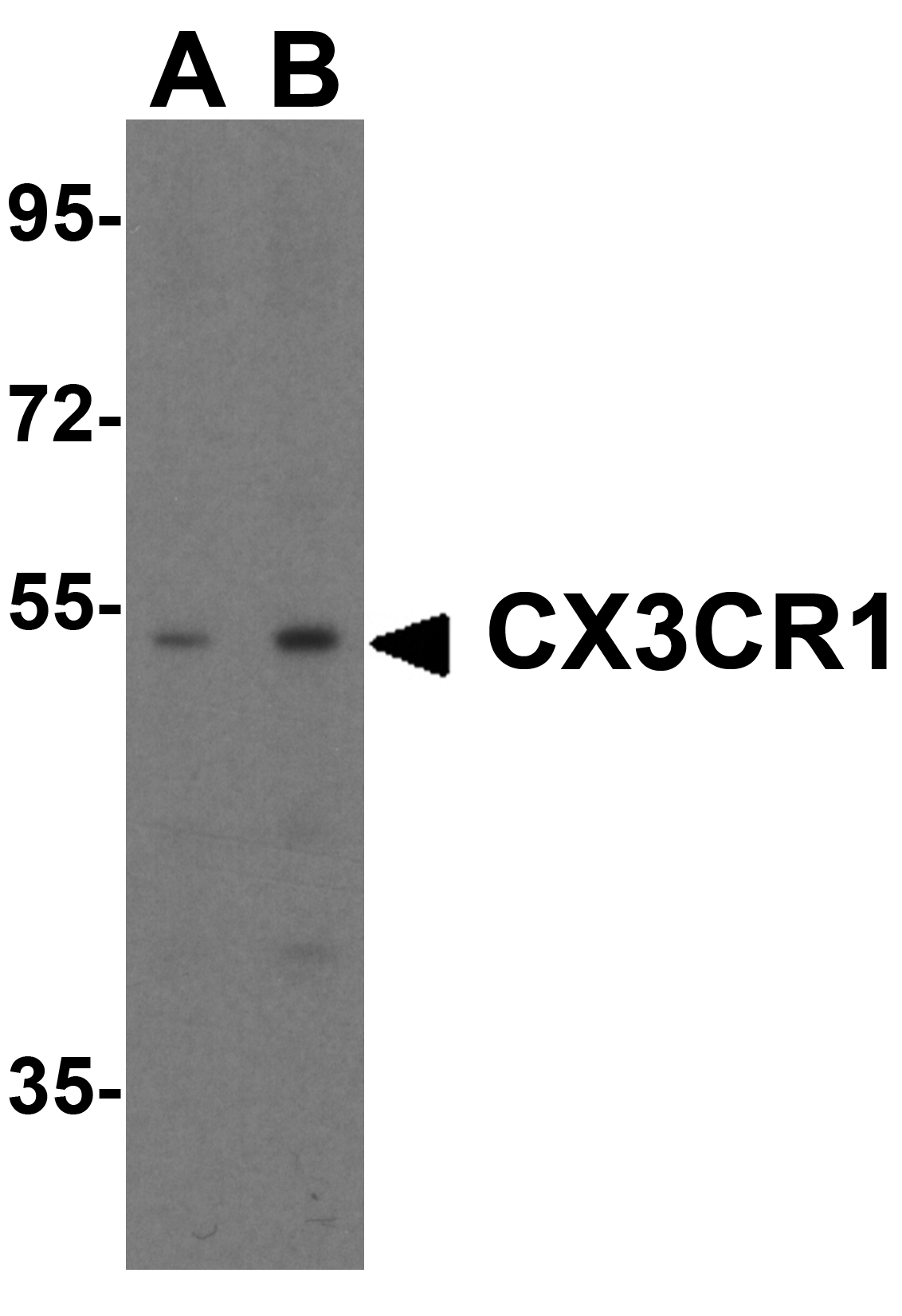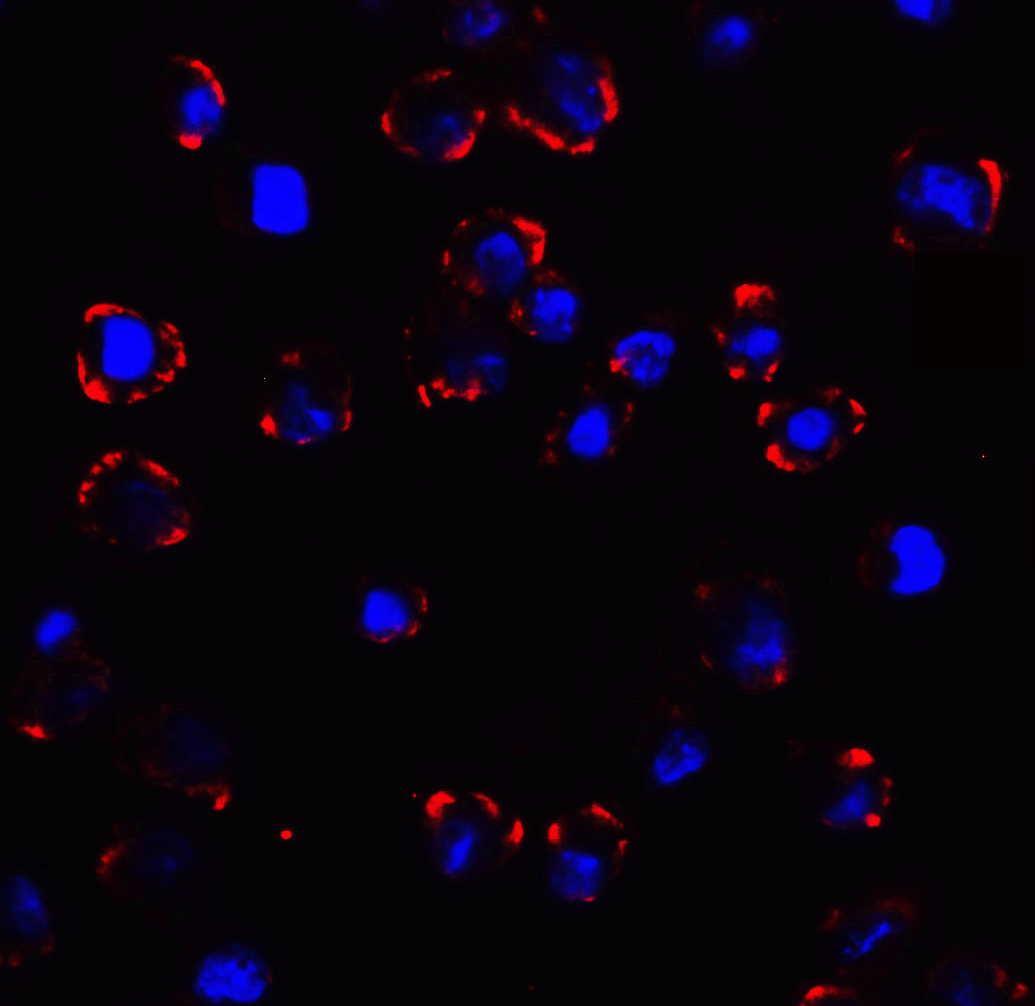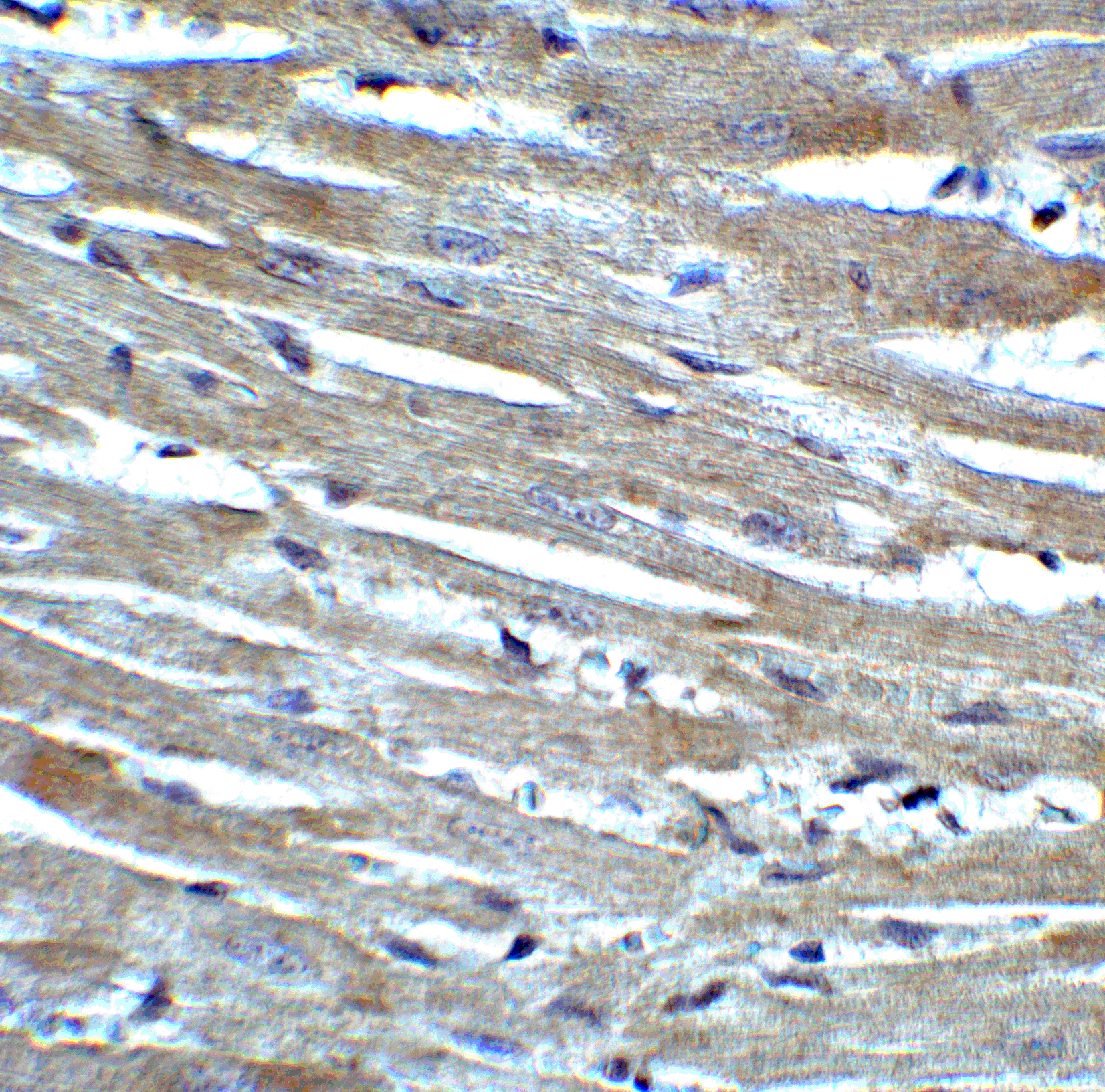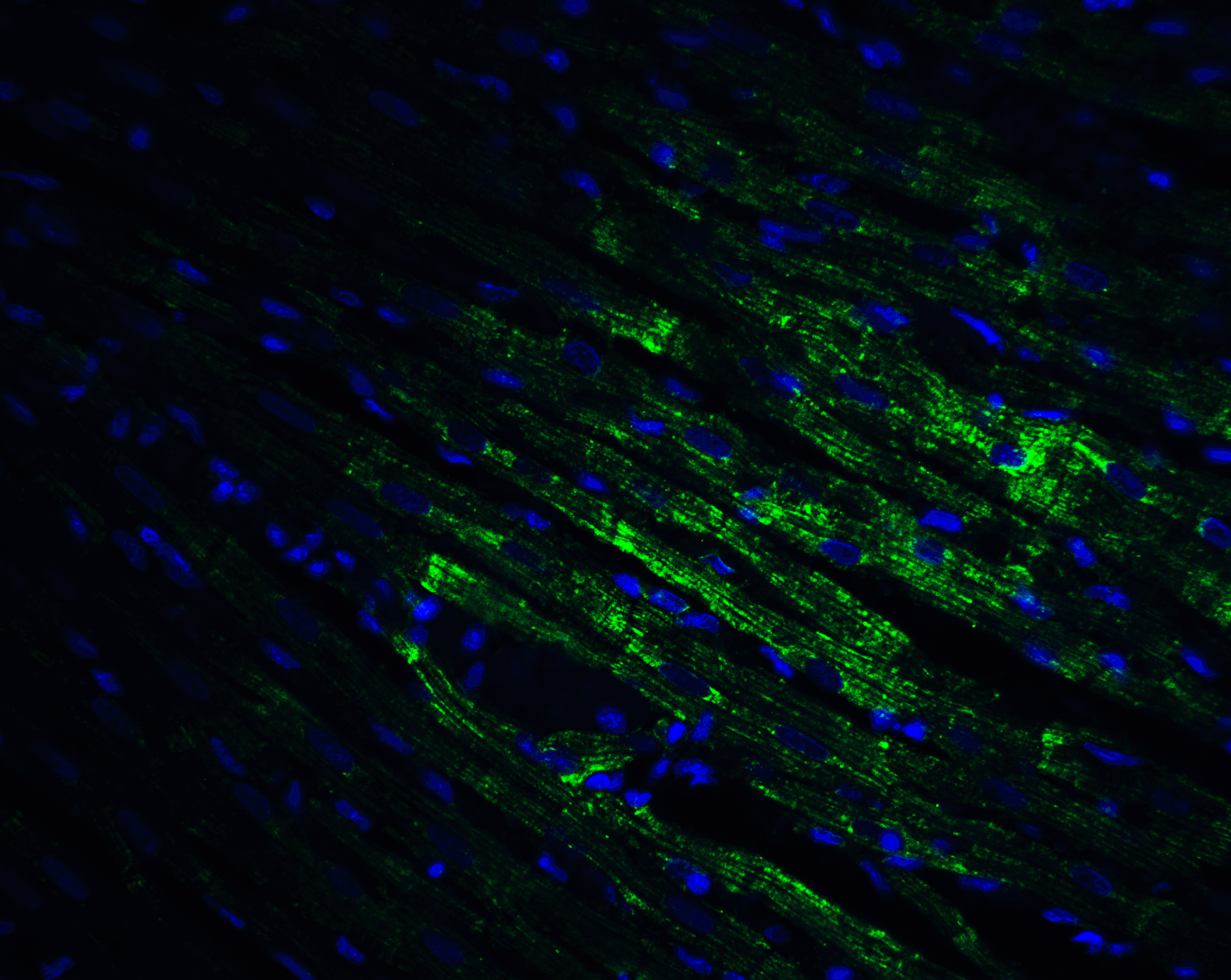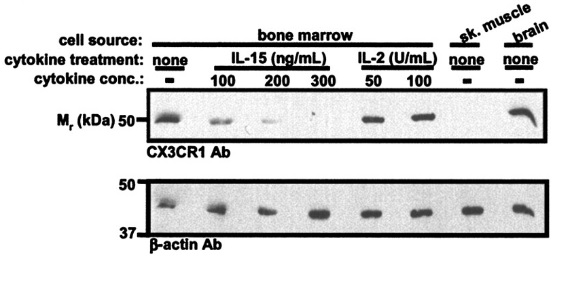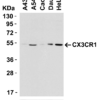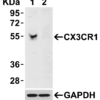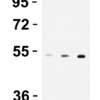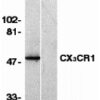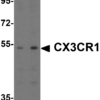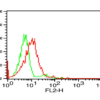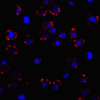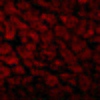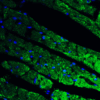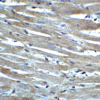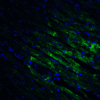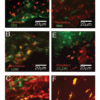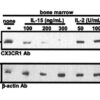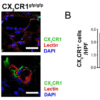Anti-CX3CR1 (NT) Antibody (2093)
$445.00
| Host | Quantity | Applications | Species Reactivity | Data Sheet | |
|---|---|---|---|---|---|
| Rabbit | 100ug | ELISA,WB,IHC-P,IF,FC | Human, Mouse, Rat |  |
SKU: 2093
Categories: Antibody Products, Infectious Disease Antibodies, Products
Overview
Product Name Anti-CX3CR1 (NT) Antibody (2093)
Description Anti-CX3CR1 (NT) Rabbit Polyclonal Antibody
Target CX3CR1 (NT)
Species Reactivity Human, Mouse, Rat
Applications ELISA,WB,IHC-P,IF,FC
Host Rabbit
Clonality Polyclonal
Isotype IgG
Immunogen Peptide corresponding to aa 2-21 of human CX3CR1. The sequence differs from mouse and rat CX3CR1 by four amino acids.
Properties
Form Liquid
Concentration Lot Specific
Formulation PBS, pH 7.4.
Buffer Formulation Phosphate Buffered Saline
Buffer pH pH 7.4
Format Purified
Purification Purified by peptide immuno-affinity chromatography
Specificity Information
Specificity This antibody recognizes human, mouse and rat CX3CR1 (50 kD).
Target Name CX3C chemokine receptor 1
Target ID CX3CR1 (NT)
Uniprot ID P49238
Alternative Names C-X3-C CKR-1, CX3CR1, β chemokine receptor-like 1, CMK-BRL-1, CMK-BRL1, Fractalkine receptor, G-protein coupled receptor 13, V28
Gene Name CX3CR1
Gene ID 1524
Accession Number NP_001328
Sequence Location Cell membrane, Multi-pass membrane protein
Biological Function Receptor for the C-X3-C chemokine fractalkine (CX3CL1) present on many early leukocyte cells; CX3CR1-CX3CL1 signaling exerts distinct functions in different tissue compartments, such as immune response, inflammation, cell adhesion and chemotaxis (PubMed:9390561, PubMed:9782118, PubMed:12055230, PubMed:23125415). CX3CR1-CX3CL1 signaling mediates cell migratory functions (By similarity). Responsible for the recruitment of natural killer (NK) cells to inflamed tissues (By similarity). Acts as a regulator of inflammation process leading to atherogenesis by mediating macrophage and monocyte recruitment to inflamed atherosclerotic plaques, promoting cell survival (By similarity). Involved in airway inflammation by promoting interleukin 2-producing T helper (Th2) cell survival in inflamed lung (By similarity). Involved in the migration of circulating monocytes to non-inflamed tissues, where they differentiate into macrophages and dendritic cells (By similarity). Acts as a negative regulator of angiogenesis, probably by promoting macrophage chemotaxis (PubMed:14581400, PubMed:18971423). Plays a key role in brain microglia by regulating inflammatory response in the central nervous system (CNS) and regulating synapse maturation (By similarity). Required to restrain the microglial inflammatory response in the CNS and the resulting parenchymal damage in response to pathological stimuli (By similarity). Involved in brain development by participating in synaptic pruning, a natural process during which brain microglia eliminates extra synapses during postnatal development (By similarity). Synaptic pruning by microglia is required to promote the maturation of circuit connectivity during brain development (By similarity). Acts as an important regulator of the gut microbiota by controlling immunity to intestinal bacteria and fungi (By similarity). Expressed in lamina propria dendritic cells in the small intestine, which form transepithelial dendrites capable of taking up bacteria in order to provide defense against pathogenic bacteria (By similarity). Required to initiate innate and adaptive immune responses against dissemination of commensal fungi (mycobiota) component of the gut: expressed in mononuclear phagocytes (MNPs) and acts by promoting induction of antifungal IgG antibodies response to confer protection against disseminated C.albicans or C.auris infection (PubMed:29326275). Also acts as a receptor for C-C motif chemokine CCL26, inducing cell chemotaxis (PubMed:20974991). {UniProtKB:Q9Z0D9, PubMed:12055230, PubMed:14581400, PubMed:18971423, PubMed:20974991, PubMed:23125415, PubMed:29326275, PubMed:9390561, PubMed:9782118}.; [Isoform 1]: (Microbial infection) Acts as coreceptor with CD4 for HIV-1 virus envelope protein. {PubMed:14607932, PubMed:9726990}.; [Isoform 2]: (Microbial infection) Acts as coreceptor with CD4 for HIV-1 virus envelope protein (PubMed:14607932). May have more potent HIV-1 coreceptothr activity than isoform 1 (PubMed:14607932). {PubMed:14607932}.; [Isoform 3]: (Microbial infection) Acts as coreceptor with CD4 for HIV-1 virus envelope protein (PubMed:14607932). May have more potent HIV-1 coreceptor activity than isoform 1 (PubMed:14607932). {PubMed:14607932}.
Research Areas Infectious Disease
Background CX3CR1 is one of the chemokine receptors that are required as co- receptors for HIV infection. The genes encoding human, murine, and rat CX3CR1 have been cloned and designated V28 and CMKBRL1, CX3CR1, and RBS11, respectively. CX3CR1 was recently identified as the receptor for the chemokine fractalkine. CX3CR1 mediates leukocyte migration and adhesion and is expressed in a variety of human tissues and cell lines.
Application Images
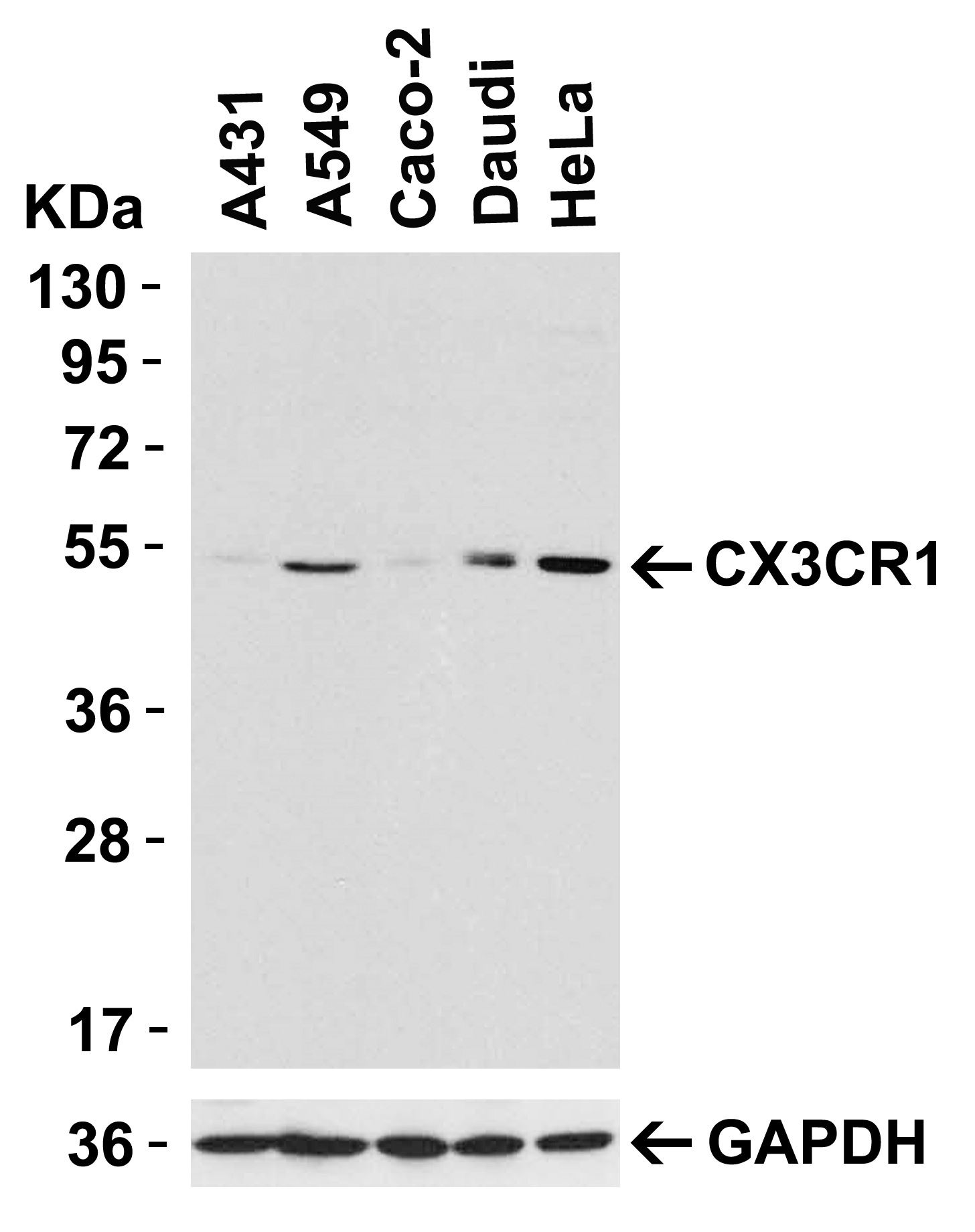
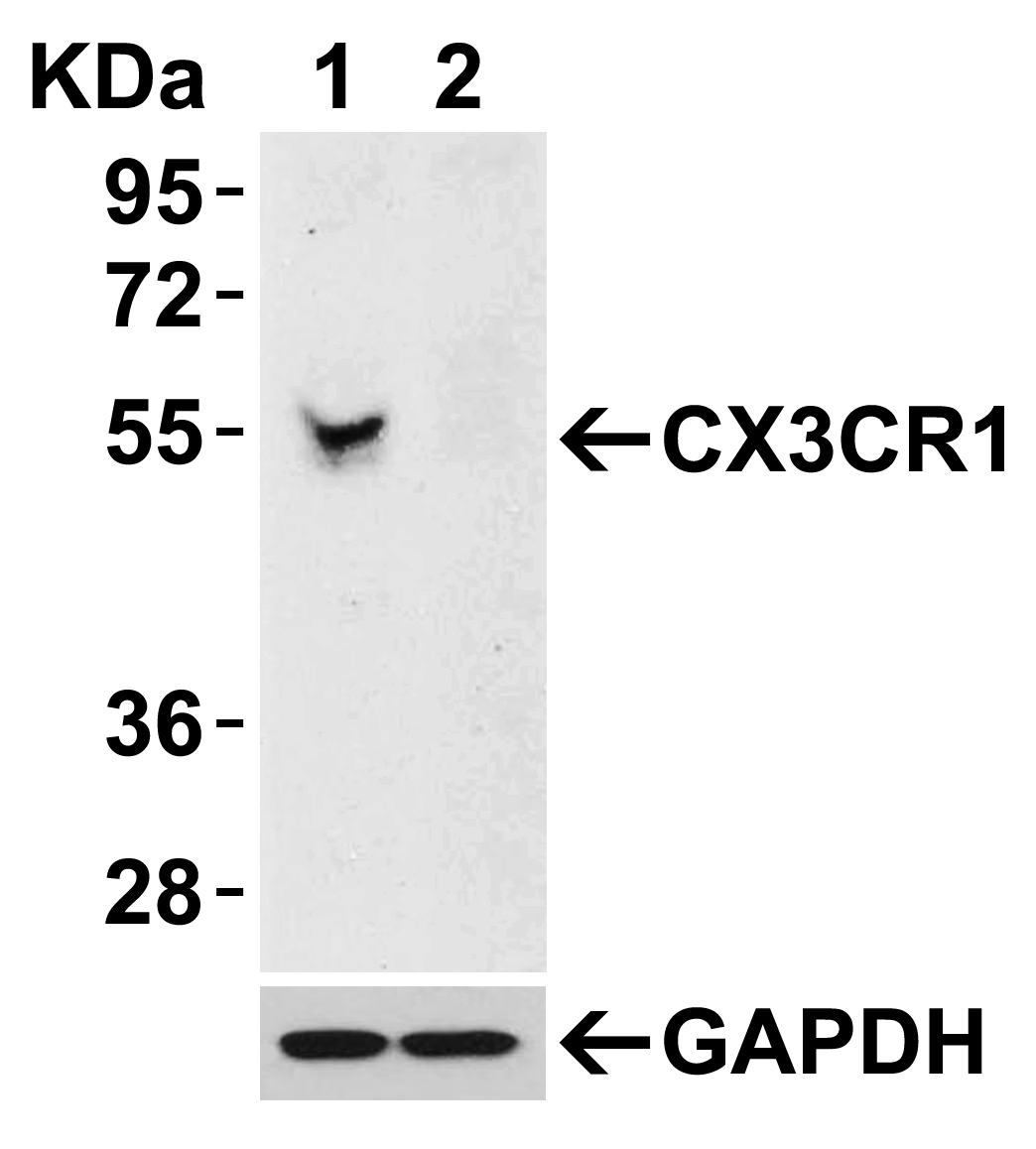



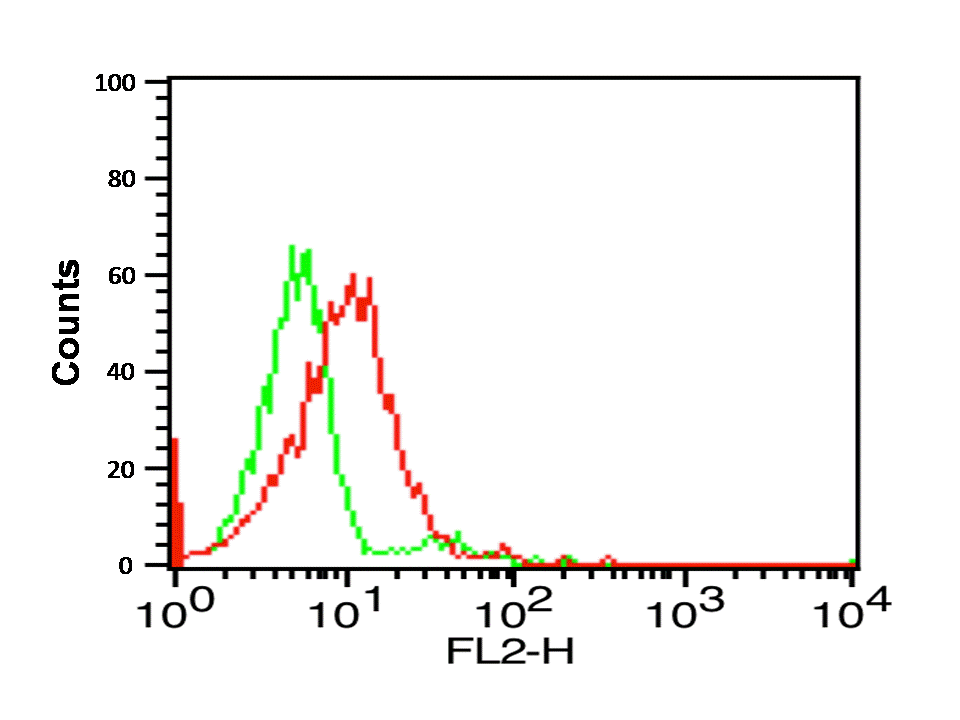

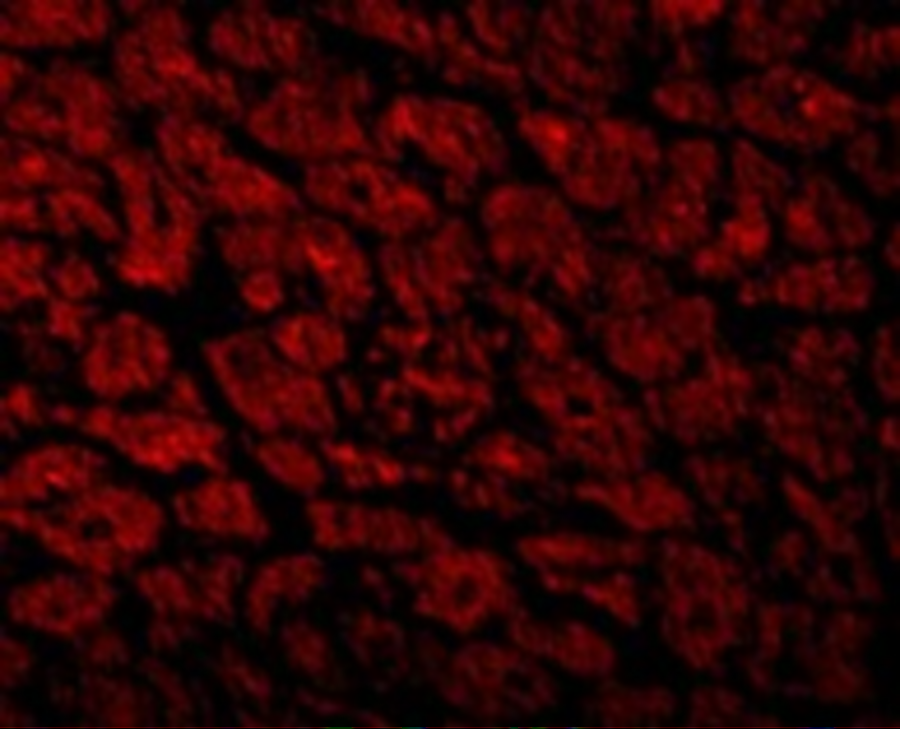
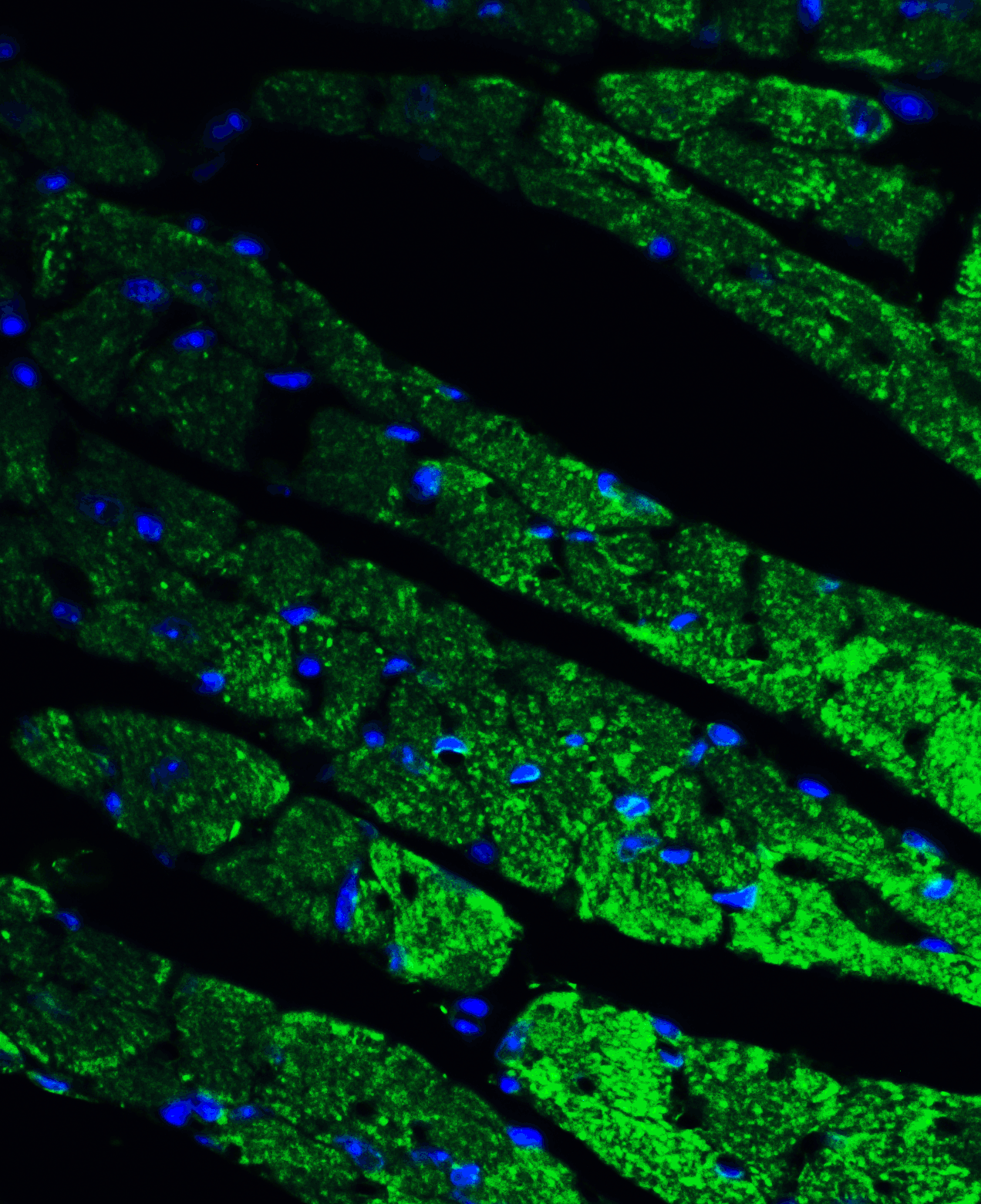


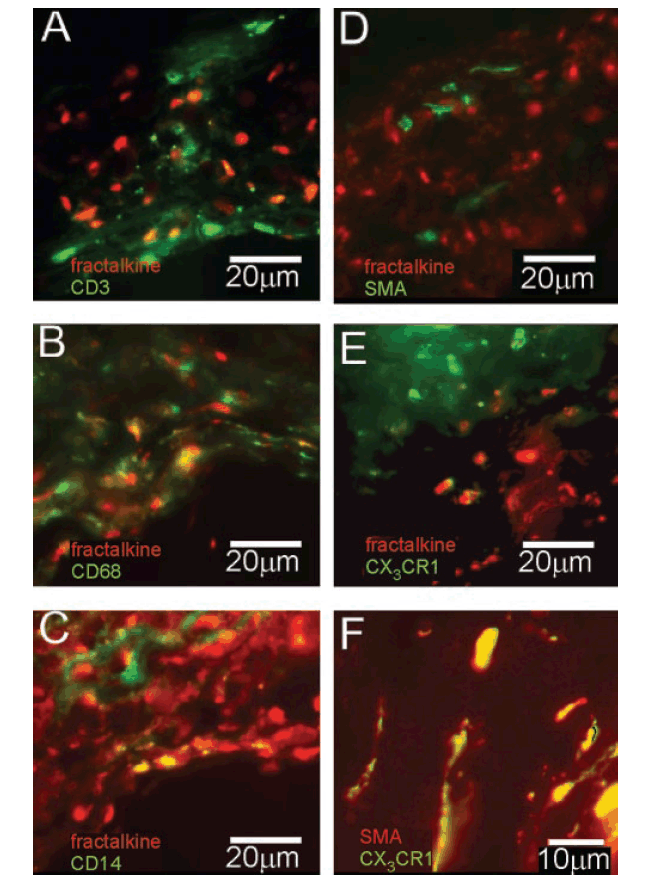

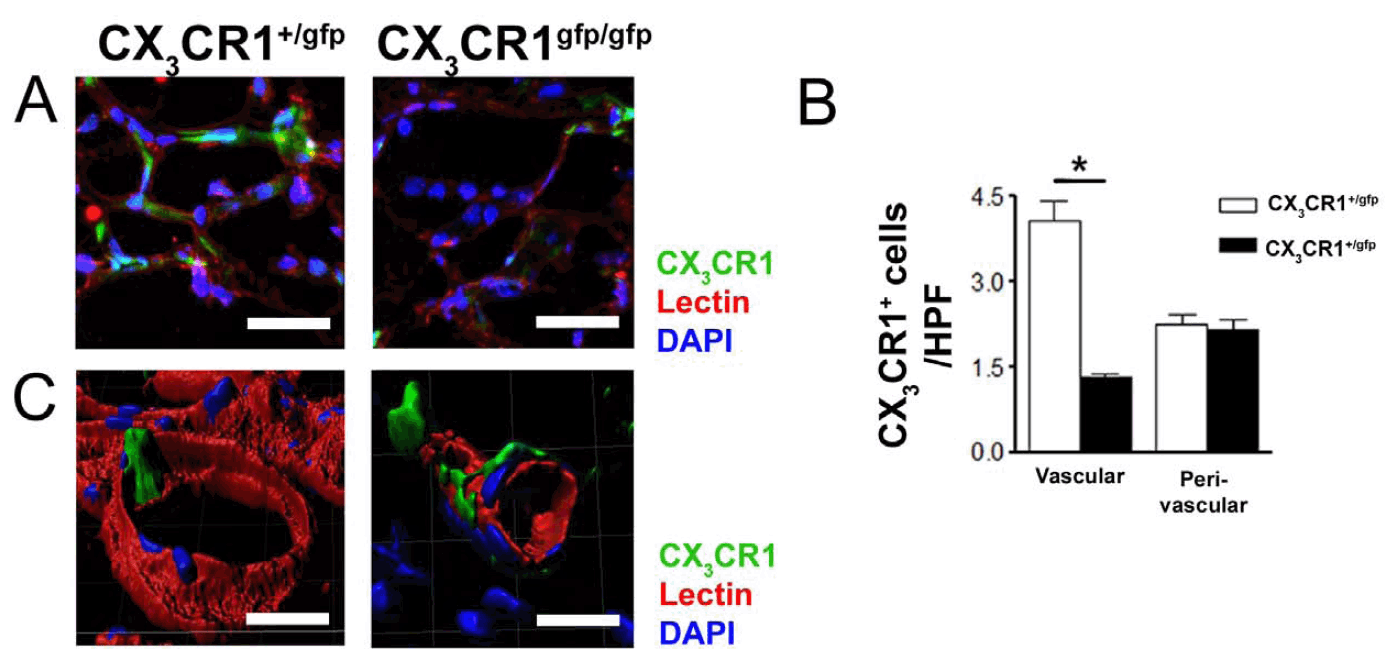

Description Western Blot Validation in Human Cells
Loading: 15 ug of lysates per lane. Antibodies: CX3CR1 2093 (0.5 ug/mL), 1h incubation at RT in 5% NFDM/TBST.Secondary: Goat anti-rabbit IgG HRP conjugate at 1:10000 dilution.
Loading: 15 ug of lysates per lane. Antibodies: CX3CR1 2093 (0.5 ug/mL), 1h incubation at RT in 5% NFDM/TBST.Secondary: Goat anti-rabbit IgG HRP conjugate at 1:10000 dilution.

Description KD Validation in 293 Cells
Loading: 15 ug of lysates per lane. Antibodies: CX3CR1 2093 (0.5 ug/mL), 1h incubation at RT in 5% NFDM/TBST.Secondary: Goat anti-rabbit IgG HRP conjugate at 1:10000 dilution.Lane 1: 293 cells transfected with control siRNAs.Lane 2: 293 cells transfected with CX3CR1 siRNAs.
Loading: 15 ug of lysates per lane. Antibodies: CX3CR1 2093 (0.5 ug/mL), 1h incubation at RT in 5% NFDM/TBST.Secondary: Goat anti-rabbit IgG HRP conjugate at 1:10000 dilution.Lane 1: 293 cells transfected with control siRNAs.Lane 2: 293 cells transfected with CX3CR1 siRNAs.

Description Western Blot Validation in THP1 Cells
Loading: 15 ug of lysates per lane. Antibodies: CX3CR1 2093 (1 ug/mL), 1h incubation at RT in 5% NFDM/TBST.Secondary: Goat anti-rabbit IgG HRP conjugate at 1:10000 dilution.Lane 1: 0.2 ug/mLLane 1: 0.5 ug/mLLane 1: 1 ug/mL
Loading: 15 ug of lysates per lane. Antibodies: CX3CR1 2093 (1 ug/mL), 1h incubation at RT in 5% NFDM/TBST.Secondary: Goat anti-rabbit IgG HRP conjugate at 1:10000 dilution.Lane 1: 0.2 ug/mLLane 1: 0.5 ug/mLLane 1: 1 ug/mL

Description Western Blot Validation in Human Spleen Lysates
Loading: 15 ug of lysates per lane. Antibodies: CX3CR1 2093 (1 ug/mL) in the absence (lane 1) or presence of blocking peptide (lane 2), 1h incubation at RT in 5% NFDM/TBST.Secondary: Goat anti-rabbit IgG HRP conjugate at 1:10000 dilution.
Loading: 15 ug of lysates per lane. Antibodies: CX3CR1 2093 (1 ug/mL) in the absence (lane 1) or presence of blocking peptide (lane 2), 1h incubation at RT in 5% NFDM/TBST.Secondary: Goat anti-rabbit IgG HRP conjugate at 1:10000 dilution.

Description Western Blot Validation in Rat Spleen Tissue
Loading: 15 ug of lysates per lane. Antibodies: CX3CR1 2093, (A; 1 ug/mL, B; 2 ug/mL), 1h incubation at RT in 5% NFDM/TBST.Secondary: Goat anti-rabbit IgG HRP conjugate at 1:10000 dilution.
Loading: 15 ug of lysates per lane. Antibodies: CX3CR1 2093, (A; 1 ug/mL, B; 2 ug/mL), 1h incubation at RT in 5% NFDM/TBST.Secondary: Goat anti-rabbit IgG HRP conjugate at 1:10000 dilution.

Description Flow Cytometry Validation of CX3CR1 in THP-1 Cells
Overlay histogram showing THP-1 cells stained with 2093 (red line, 1ug/1x106 cells). 1 h incubation at 4C in 2% FBS/PBS. Followed by secondary antibody 488 goat anti-rabbit IgG (H+L) at 1/500 dilution for 1 h 4C.
Isotype control antibody (Green line) was rabbit IgG1 (1ug/1x106 cells) used under the same conditions. Acquisition of >10,000 events was performed.
Overlay histogram showing THP-1 cells stained with 2093 (red line, 1ug/1x106 cells). 1 h incubation at 4C in 2% FBS/PBS. Followed by secondary antibody 488 goat anti-rabbit IgG (H+L) at 1/500 dilution for 1 h 4C.
Isotype control antibody (Green line) was rabbit IgG1 (1ug/1x106 cells) used under the same conditions. Acquisition of >10,000 events was performed.

Description Immunofluorescence Validation of CX3CR1 In K562 Cells
Immunofluorescent analysis of 4% paraformaldehyde-fixed K562 cells labeling CX3CR1 with 2093 at 10 ug/mL, followed by goat anti-rabbit IgG secondary antibody at 1/500 dilution (red) and DAPI staining (blue). Image showing membrane staining on K562 cells.
Immunofluorescent analysis of 4% paraformaldehyde-fixed K562 cells labeling CX3CR1 with 2093 at 10 ug/mL, followed by goat anti-rabbit IgG secondary antibody at 1/500 dilution (red) and DAPI staining (blue). Image showing membrane staining on K562 cells.

Description Immunofluorescence Validation of CX3CR1 in Human Heart
Immunofluorescent analysis of 4% paraformaldehyde-fixed human heart tissue labeling CX3CR1 with 2093 at 10 ug/mL, followed by goat anti-rabbit IgG secondary antibody at 1/500 dilution (red).
Immunofluorescent analysis of 4% paraformaldehyde-fixed human heart tissue labeling CX3CR1 with 2093 at 10 ug/mL, followed by goat anti-rabbit IgG secondary antibody at 1/500 dilution (red).

Description Immunofluorescence Validation of CX3CR1 in Mouse Heart Tissue
Immunofluorescent analysis of 4% paraformaldehyde-fixed mouse heart tissue labeling CX3CR1 with 2093 at 20 ug/mL, followed by goat anti-rabbit IgG secondary antibody at 1/500 dilution (green) and DAPI staining (blue).
Immunofluorescent analysis of 4% paraformaldehyde-fixed mouse heart tissue labeling CX3CR1 with 2093 at 20 ug/mL, followed by goat anti-rabbit IgG secondary antibody at 1/500 dilution (green) and DAPI staining (blue).

Description Immunohistochemistry Validation of CX3CR1 in Rat Heart Tissue
Immunohistochemical analysis of paraffin-embedded rat heart tissue using anti-CX3CR1 antibody (2093) at 2 ug/ml. Tissue was fixed with formaldehyde and blocked with 10% serum for 1 h at RT; antigen retrieval was by heat mediation with a citrate buffer (pH6). Samples were incubated with primary antibody overnight at 4C. A goat anti-rabbit IgG H&L (HRP) at 1/250 was used as secondary. Counter stained with Hematoxylin.
Immunohistochemical analysis of paraffin-embedded rat heart tissue using anti-CX3CR1 antibody (2093) at 2 ug/ml. Tissue was fixed with formaldehyde and blocked with 10% serum for 1 h at RT; antigen retrieval was by heat mediation with a citrate buffer (pH6). Samples were incubated with primary antibody overnight at 4C. A goat anti-rabbit IgG H&L (HRP) at 1/250 was used as secondary. Counter stained with Hematoxylin.

Description Figure 11 Immunofluorescence Validation of CX3CR1 in Rat Heart Tissue
Immunofluorescent analysis of 4% paraformaldehyde-fixed rat heart tissue labeling CX3CR1 with 2093 at 20 ug/mL, followed by goat anti-rabbit IgG secondary antibody at 1/500 dilution (green) and DAPI staining (blue).
Immunofluorescent analysis of 4% paraformaldehyde-fixed rat heart tissue labeling CX3CR1 with 2093 at 20 ug/mL, followed by goat anti-rabbit IgG secondary antibody at 1/500 dilution (green) and DAPI staining (blue).

Description Immunofluorescence Validation of CX3CR1 in Human Atherosclerosis (Lucas et al., 2424)
CX3CR1-positive cells in coronary artery sections was detected by anti-CX3CR1 antibodies by double staining with an anti–smooth muscle actin antibody (yellow).
CX3CR1-positive cells in coronary artery sections was detected by anti-CX3CR1 antibodies by double staining with an anti–smooth muscle actin antibody (yellow).
Description Regulated Expression Validation of CX3CR1 in Mouse Bone Marrow-derived NK Cells (Barlic et al., 2424)
Western blot analysis of CX3CR1 expression detected by anti-CX3CR1 antibodies was induced by IL-2 but was inhibited by IL-15. Mouse skeletal muscle was for negative control and mouse brain was for positive control.
Western blot analysis of CX3CR1 expression detected by anti-CX3CR1 antibodies was induced by IL-2 but was inhibited by IL-15. Mouse skeletal muscle was for negative control and mouse brain was for positive control.

Description CX3CR1 Deficiency Validation in Transgenic Mice (Kumar et al., 2412)
Transgenic CX3CR1 gfp (C57BL6/J background) mice, in which either one (CX3CR1 gfp/+ ) or both (CX3CR1 gfp/gfp ) copies of the CX3CR1 gene were interrupted by fluorescent protein (GFP). More CX3CR1 positive cells (green) are found in vascular wall of CX3CR1 gfp/+ mice, but not in CX3CR1 gfp/gfp mice, where cells remained in perivascular region due to leaky microvessels. CX3CR1 expression was detected by anti-CX3CR1 antibodies.
Transgenic CX3CR1 gfp (C57BL6/J background) mice, in which either one (CX3CR1 gfp/+ ) or both (CX3CR1 gfp/gfp ) copies of the CX3CR1 gene were interrupted by fluorescent protein (GFP). More CX3CR1 positive cells (green) are found in vascular wall of CX3CR1 gfp/+ mice, but not in CX3CR1 gfp/gfp mice, where cells remained in perivascular region due to leaky microvessels. CX3CR1 expression was detected by anti-CX3CR1 antibodies.
Handling
Storage This antibody is stable for at least one (1) year at -20°C. Avoid multiple freeze- thaw cycles.
Dilution Instructions Dilute in PBS or medium which is identical to that used in the assay system.
Application Instructions Immunoblotting: use at 1:500-1:2,000 dilution.
Positive control: Tissue lysate from human spleen.
Positive control: Tissue lysate from human spleen.
References & Data Sheet
Data Sheet  Download PDF Data Sheet
Download PDF Data Sheet
 Download PDF Data Sheet
Download PDF Data Sheet



